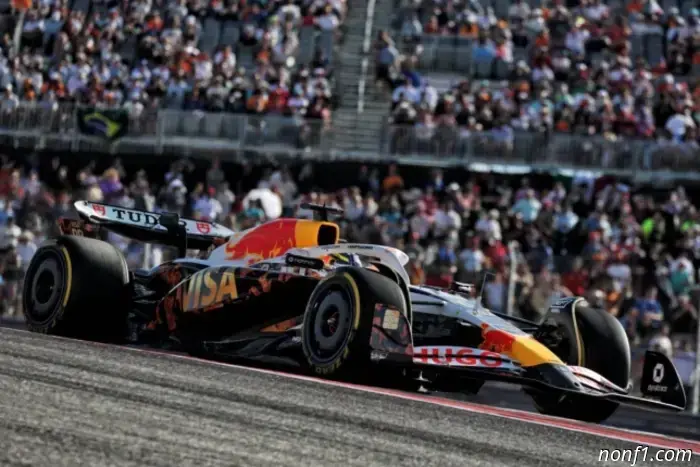
Technical innovations presented in Austin
The US Grand Prix continues a trend characteristic of the second half of the season: teams are doing less development work on the cars, having fully switched to preparing for 2026. Haas F1 decided to take advantage of this and brought to Austin, as the American team’s press office put it, "a number of small updates."
That is, the hope is that all this will at least slightly improve things relative to their direct rivals and, with a bit of luck, improve Haas’s position in the standings, which currently sits second-to-last, in 9th place in the Constructors' Championship.
But let’s start at the other end of the pit lane, since Mercedes also reported some changes affecting peripheral elements of the W16’s aerodynamic bodywork.
Mercedes
In Mercedes’ case the changes are indeed small and concern the rear of the car, specifically its "rear corner" — in Formula 1 terminology.
They involve adjusting the geometry of the upper part of the rear brake ducts and reducing the width of the small auxiliary winglets mounted on them.
The first change is aimed at improving the quality of the airflow passing through this area of the car and flowing around the upper triangular suspension arm. The winglet sizes have been reduced to increase the clearance between them and the rear tyre.
Haas F1
The list of upgrades presented by Haas F1 consists of five items, and compared with Mercedes these changes can hardly be called small, since three of them concern the car’s floor.
At the front of the floor the configuration of the Venturi tunnel baffles has been altered, and in the area closer to the rear wheels the additional winglets mounted on the edges of the floor have been reduced in size. It is also mentioned — without specifics, however — that the geometry of the main part of this crucial element of the aerodynamic package has been adjusted.
These refinements are an evolution of solutions that appeared on the cars of Esteban Ocon and Oliver Bearman before the Silverstone round, and they allow an increase in downforce levels, which should primarily manifest in high-speed corners.
In addition, it is reported that the mentioned changes required adjustments to the geometry of the additional winglets located around the rear wheels. Finally, the mirror stalks were slightly reworked — this allows their effect on the airflow to be optimized.
Other articles
 Hajar: I still think we have the speed.
Both Racing Bulls drivers believe the car allows them to fight for higher positions, but for different reasons neither managed to make it into the final qualifying session for the sprint at the Circuit of the Americas in Texas...
Hajar: I still think we have the speed.
Both Racing Bulls drivers believe the car allows them to fight for higher positions, but for different reasons neither managed to make it into the final qualifying session for the sprint at the Circuit of the Americas in Texas...
 The FIA disagrees with Tim Meyer's criticism.
The FIA reacted very categorically to criticism of the federation voiced during Tim Mayer's press conference yesterday; Mayer had withdrawn his candidacy from the organization's upcoming presidential election.
George Russell: We definitely couldn't fight for pole.
George Russell posted the fifth-fastest time in the Sprint qualifying in Austin, after which he said they could have moved up to an even higher position, but Mercedes had no chance of pole.
Fernando Alonso: One of the best qualifying sessions of the season
Fernando Alonso, who posted the sixth-fastest time in sprint qualifying in Austin, called the session one of the best of the season.
The FIA disagrees with Tim Meyer's criticism.
The FIA reacted very categorically to criticism of the federation voiced during Tim Mayer's press conference yesterday; Mayer had withdrawn his candidacy from the organization's upcoming presidential election.
George Russell: We definitely couldn't fight for pole.
George Russell posted the fifth-fastest time in the Sprint qualifying in Austin, after which he said they could have moved up to an even higher position, but Mercedes had no chance of pole.
Fernando Alonso: One of the best qualifying sessions of the season
Fernando Alonso, who posted the sixth-fastest time in sprint qualifying in Austin, called the session one of the best of the season.
 Button: Piastri may be allowed to choose pit-stop timing.
Jenson Button and Martin Brundle on Sky Sports discussed what consequences McLaren's bosses might be considering for their drivers after the incident in Singapore.
Button: Piastri may be allowed to choose pit-stop timing.
Jenson Button and Martin Brundle on Sky Sports discussed what consequences McLaren's bosses might be considering for their drivers after the incident in Singapore.
 McLaren expect intense tyre degradation
Andrea Stella commented on the sprint qualifying results and made it clear that the mood within the McLaren team is quite positive — and explained what it's down to.
McLaren expect intense tyre degradation
Andrea Stella commented on the sprint qualifying results and made it clear that the mood within the McLaren team is quite positive — and explained what it's down to.
Technical innovations presented in Austin
At the US Grand Prix a trend characteristic of the second half of the season continues: teams are doing fewer and fewer upgrades to their cars, having fully switched their focus to preparing for 2026. That’s exactly what Haas F1 decided to take advantage of...
